

By Holly Grace Callis | Published on May 24, 2025
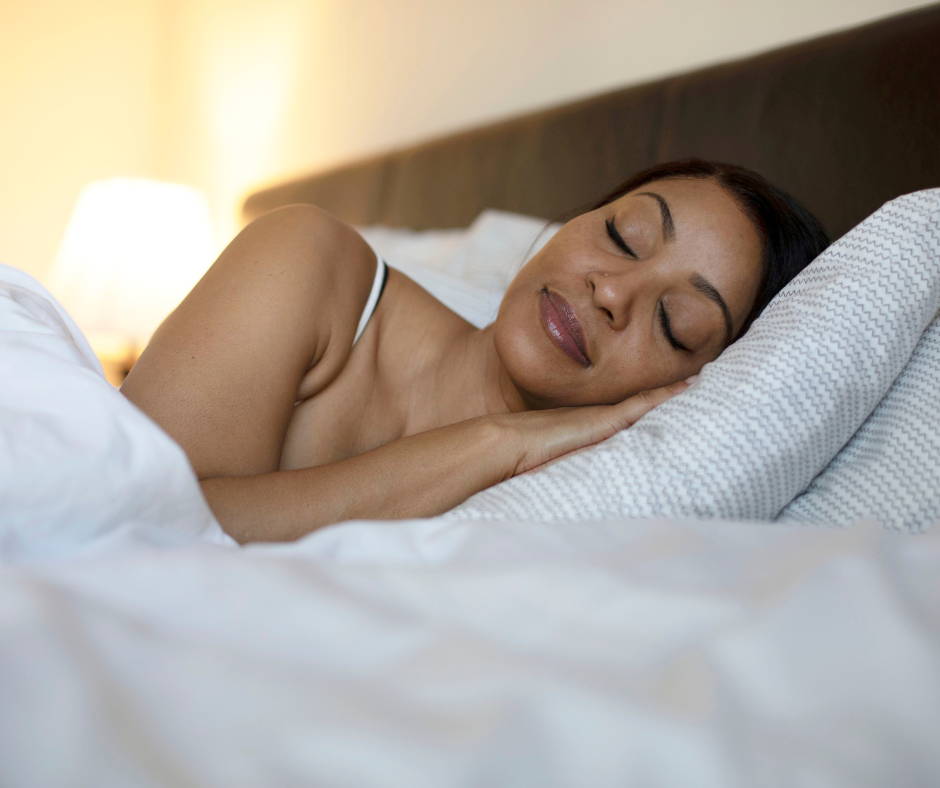
Ever feel like sleep isn't what it used to be?
For many women over 40, getting a good night’s sleep becomes harder, whether it's due to hormonal changes, aches and pains, or the lingering effects of stress. You might fall asleep fine, only to wake up stiff, sore, or completely unrested. And while many things can affect sleep quality, one of the most overlooked is your sleeping position.
Finding the best sleep position for your body isn’t about sticking to the latest trend or copying what works for someone else. It’s about choosing a sleep posture that supports your joints, promotes healthy blood flow, and reduces the risk of sleep disruptions like snoring, acid reflux, or sleep apnea.
In this blog, we’ll explore the ideal sleep positions for women over 40, and how to adapt your setup for deeper, more restful sleep.
Your body changes over time, and so do your sleep needs. As estrogen levels decline in midlife, sleep can become lighter and more fragmented. Women may also experience more sleep disorders, such as insomnia symptoms or obstructive sleep apnea. At the same time, years of wear and tear can make the spine, shoulders, and hips more sensitive to poor support or awkward angles during sleep.
That’s why your sleep position matters more than ever. The way you sleep can impact everything from shoulder pain and neck stiffness to facial wrinkles and spinal alignment. It can even affect how your internal organs function overnight. Sleeping in a position that relieves pressure and supports the body’s natural curve can lead to fewer nocturnal body movements, deeper rest, and better recovery overall.
Ready to catch up on your Zzzs? Let's dive into our expert-backed list of the best sleeping positions for women over the age of 40 so you can build a solid sleep foundation that delivers restful nights.
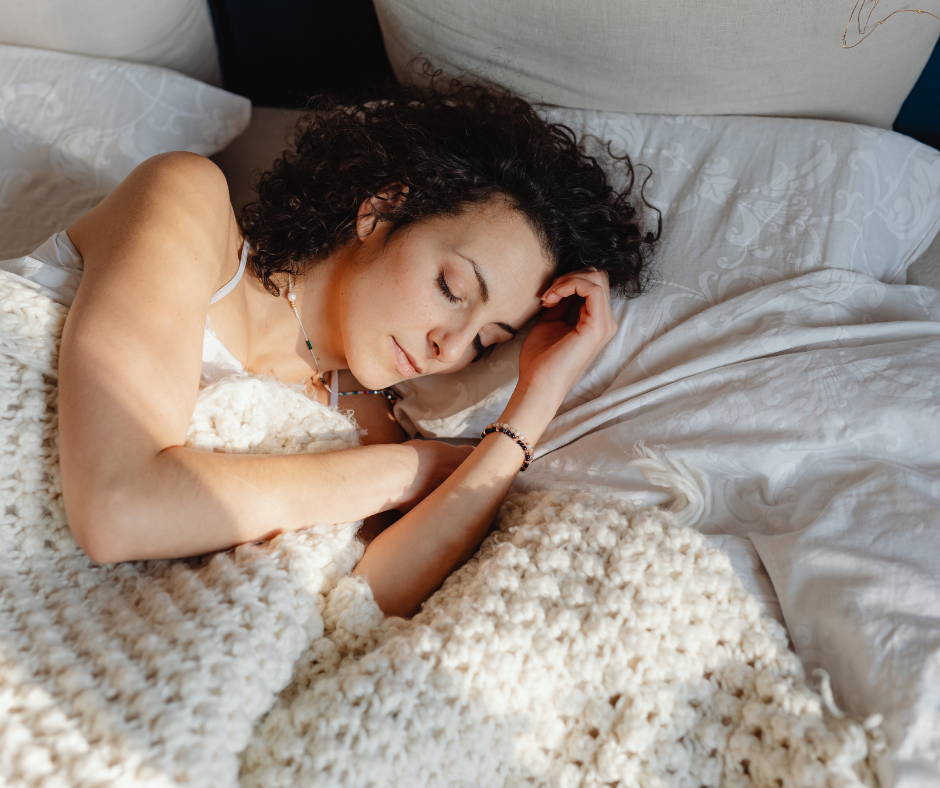
Side sleeping is one of the most recommended sleep positions for women over 40—and for good reason. It helps keep the spine aligned, reduces pressure on the lower back, and supports healthier breathing. If you deal with mild sleep apnea, side sleeping may help keep your airway open, reducing the risk of airway collapse or position-dependent snoring.
Sleeping on your left side has added benefits. It’s been shown to reduce symptoms of gastroesophageal reflux disease (GERD) and acid reflux by positioning the stomach below the esophagus, which helps prevent backflow during the night. It’s also thought to support better lymphatic drainage and promote blood flow to vital organs.
This position is especially helpful for pregnant women or those in the third trimester, as it helps keep circulation flowing to the uterus while relieving pressure on the back.
To make side sleeping more comfortable:
-Use a small pillow between your knees to keep your hips aligned.
-Choose a thicker pillow for your head to fill the space between your neck and the mattress.
-Make sure your shoulder isn’t crushed—your upper body should feel supported, not squished.
With a few tweaks, side sleeping can become your body’s favorite way to relax and recover.
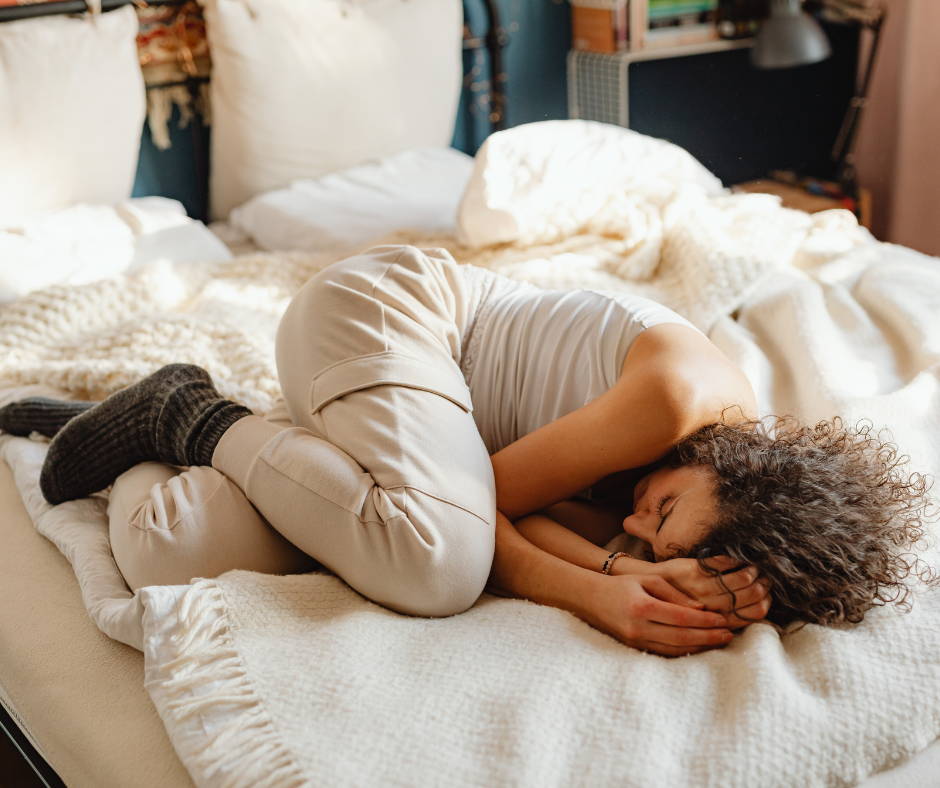
Many women naturally curl into the fetal position at night—lying on their side with knees tucked slightly toward the chest. It’s a popular sleep position because it feels safe, supportive, and warm. But beyond comfort, it also offers several real health benefits.
The fetal position helps relieve back pain by stretching the spine slightly and reducing compression in the joints. It can also reduce snoring and may help people with obstructive sleep apnoea sleep more peacefully.
However, there are a few things to watch for. Curling up too tightly can restrict deep breathing or put stress on the hips and knees. It might also contribute to facial wrinkles if your face is pressed into the pillow all night.
To sleep well in this position:
-Keep your knees slightly bent, not pulled all the way up.
-Use a supportive pillow to cradle your neck and maintain alignment.
-Consider a satin pillowcase or placing your cheek higher on the pillow to avoid pressing into it.
Some sleep studies have noted that people in the fetal position tend to have fewer nocturnal body movements based on free-living accelerometer recordings—suggesting more stability during the sleep cycle.
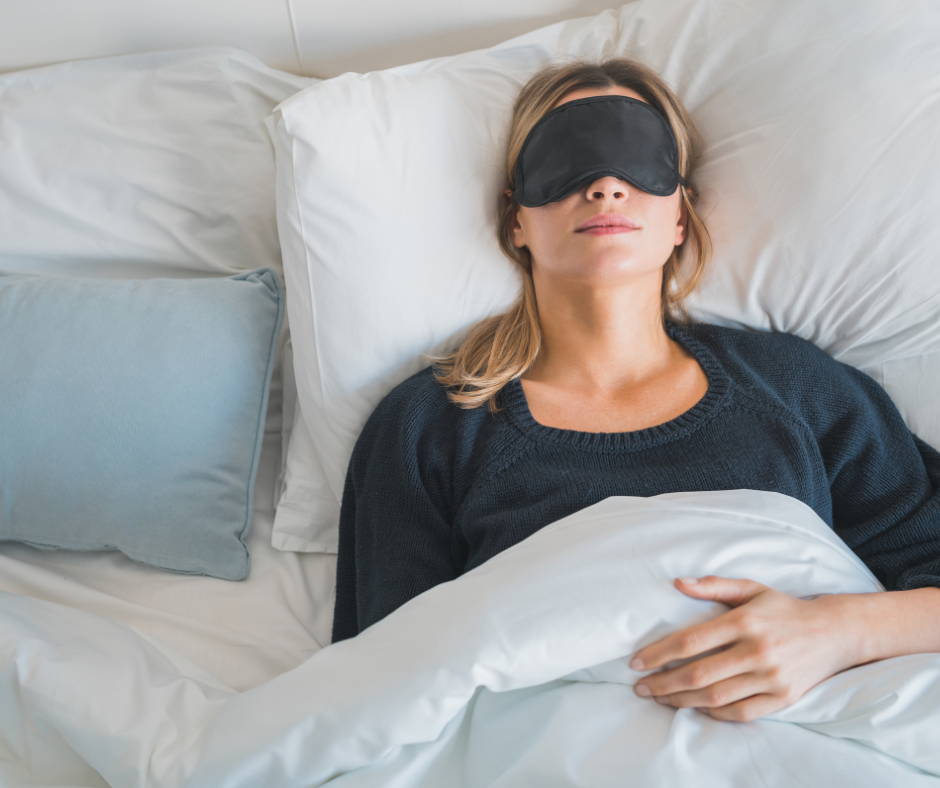
Back sleeping, or sleeping on your back, is considered ideal by many sleep medicine specialists for spinal health and joint alignment. In this position, the spine is in a neutral posture, which reduces the chance of developing non-specific spinal symptoms or lower back strain. It’s also one of the best positions for preventing sleep wrinkles, since your face isn’t being pressed into the pillow.
But back sleeping isn't perfect for everyone. For people who snore or have obstructive sleep apnea, lying flat on the back may make symptoms worse by allowing the tongue and soft tissues to fall backward and partially block the airway.
Still, for women without those conditions, back sleeping can be very beneficial.
To make this position work better:
-Use a thinner or contoured pillow to maintain the natural curve of your neck.
-Place a small pillow or rolled towel under your knees to relieve pressure on the lower back.
-Avoid stacking too many pillows under your head, as this can tilt your neck forward and reduce airflow.
Some women find this position promotes better facial circulation and a more restful sleep overall—especially when paired with the right pillow setup.
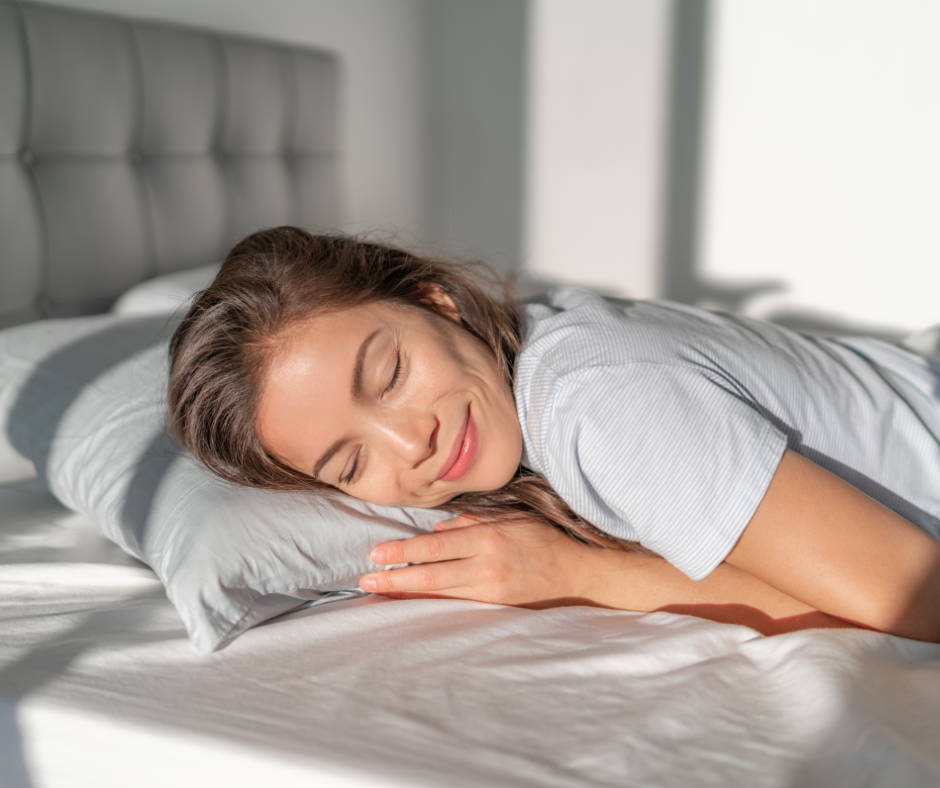
Stomach sleeping—or the prone position—is one of the most controversial sleep positions. While some people prefer sleeping this way because it reduces snoring, it often leads to other problems, especially for women over 40.
This position puts pressure on the neck and spine, especially if your head is turned to one side all night. It can also strain the lower back and shoulders, interfere with healthy blood flow, and press into the abdomen, which may affect internal organs over time.
People who sleep in this position often wake up with neck pain or shoulder discomfort. And for those with breast tenderness or digestive issues, stomach sleeping may be an unhealthy position that makes pain worse.
If you’re a lifelong stomach sleeper but want to transition out of it:
-Try side sleeping with a body pillow to simulate the weight against your front.
-Use a softer mattress to reduce pressure points.
-Gradually train yourself to shift by sleeping at an angle instead of flat on your front.
Most sleep medicine experts consider prone sleeping one of the worst sleeping positions for women over 40 due to its long-term impact on posture and joint health.
While not a traditional sleep posture, some women find that sleeping in a slightly reclined position helps reduce pain and improve breathing. This is especially true for those dealing with acid reflux, sleep apnea, or respiratory discomfort.
In this position, the upper body is elevated—either by sleeping in an adjustable bed or using a wedge pillow. The incline can help reduce symptoms of GERD by preventing stomach acid from rising. It can also ease pressure on the lungs and promote more comfortable breathing in cases of mild airway obstruction.
This posture may also help reduce tossing and turning, especially during sleep transitions or hormonal fluctuations that affect temperature regulation or digestion.
A few tips for this setup:
-Use a supportive pillow behind your lower back to avoid over-arching the spine.
-Elevate legs slightly to promote circulation and reduce swelling.
-Adjust angles gradually if transitioning from a flat mattress to a semi-upright position.
While not necessarily your forever posture, this can be a good short-term option for supporting restful sleep during times of physical recovery or symptom flare-ups.

Finding the best sleeping position is only part of the picture. Supporting your posture with the right pillows and positioning can make a huge difference in reducing strain and improving comfort.
-For side sleepers: use a thicker pillow that fills the space between your head and mattress, and a second pillow between your knees to reduce spinal twisting.
-For back sleepers: a flatter pillow under the head and a small pillow under the knees helps keep the spine in alignment.
-For any position: look for a supportive pillow that matches your neck's natural curve—something like theMirella Pillow orThera Pillow, both of which provide structured yet gentle support to reduce pressure and improve sleep posture.
Studies have shown that when posture is properly supported, people experience fewer nocturnal body movements and stay in deeper sleep stages longer. The better supported your body is, the easier it becomes to fall asleep and stay asleep.
Changing your sleeping position can feel like learning a new habit—awkward at first, but worthwhile in the long run. If you’ve always slept on your stomach but want to switch to side sleeping or back sleeping, you don’t have to do it all at once.
Here are a few ways to ease the transition:
-Use pillow barriers: Place a body pillow behind or in front of you to encourage staying on your side.
-Practice during naps: Try resting in the new position for short naps to build muscle memory.
-Adjust your mattress firmness: A softer or medium mattress can make side or back sleeping more comfortable.
-Be patient: It may take a few weeks, but your body will adapt—especially if the new position helps reduce pain or sleep disruptions.
Remember, there’s no need to force it. If a “better” sleep position doesn’t feel right for your body, it may not be the best sleeping option for you. Comfort and relaxation still matter most.

If you’re struggling to sleep well despite making changes to your sleep posture, it may be time to consult a sleep medicine specialist. Conditions like sleep apnea, position-dependent snoring, and chronic insomnia symptoms often require expert guidance.
These professionals can conduct sleep studies, review free living accelerometer recordings, or recommend positional therapy devices to help you find the right solution. Even if you’re not dealing with a full-blown disorder, a specialist can help identify relationships between your symptoms, your sleeping position, and your overall health.
Don't ignore persistent neck pain, unexplained fatigue, or frequent waking—they’re often signs your sleep posture may need extra support or evaluation.
There’s no universal “best sleeping position” for everyone—but for women over 40, certain postures can support better sleep, reduce pain, and ease the effects of aging on the body. Whether you're sleeping on your side, back, or in a semi-upright position, what matters most is proper alignment, comfort, and consistency.
A comfy position paired with the right tools (like a supportive pillow and posture-friendly mattress) can help improve your sleep cycle and reduce the strain that builds up overnight. Over time, even small adjustments can lead to more restful nights, fewer aches, and better mornings.
So listen to your body. Try new positions slowly. And don’t be afraid to invest in a pillow or sleep setup that actually supports your health. The way you sleep matters—and it’s never too late to make it better.